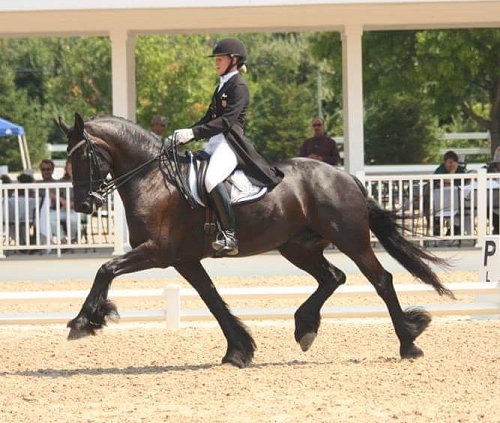 A genetically black horse has no agouti pattern genetic modifier which enables the horse to restrict black pigment to certain parts of the coat, notably the legs, mane and tail, allowing the underlying red to show through, resulting in bay coloring. Without this gene, any black pigment present is unrestricted, resulting in a uniformly black coat.
A genetically black horse has no agouti pattern genetic modifier which enables the horse to restrict black pigment to certain parts of the coat, notably the legs, mane and tail, allowing the underlying red to show through, resulting in bay coloring. Without this gene, any black pigment present is unrestricted, resulting in a uniformly black coat.
There is also a difference between a horse who is “rusted” and one who is genetically deep brown/black/bay.
Ultra violet lights can cause the hair on a black horse to gradually lighten until it is no longer black but turns a rusty red. This Friesian colt already has rust on the ends of his new mane.
Horses such as Friesians are often kept in covered stalls or wear blankets when outside to keep their “black” coats as black as possible.
Some Mink Oil products or other sunblock products can afford protection against rusting.
Considered black, this show friesian in bright sunlight shows hints of red. And the colt, who is shedding his baby coat, is very light compared to the “black” he will be when grown. These two are probably not genetically “pure black”, so bright light allows their underlying deep red to become visible. 

We certainly don’t know everything. Please share your expertise. Comment on what is already written or Suggest a Category and Educate us about it. Grow Horse-Pros.com©